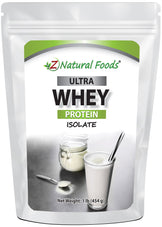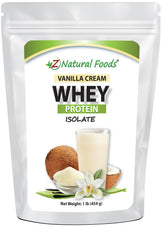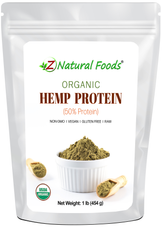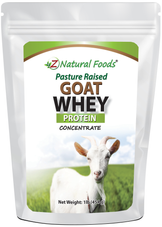Description
Description
If you have ever asked yourself, “What is the most digestible protein powder?”, you have found the right resource.
In order to answer this question correctly, it is essential first to look at two factors that may help define what is meant by “most digestible.”
- The first is to look at various aspects that may determine the bioavailability of individual proteins.
- The second is to evaluate aspects of an individual's gut health to match the correct protein so each individual gets the most out of their consumption.
The following are some interesting facts regarding the various aspects of protein digestion and utilization in the large intestines and the microbiome.
Facts about protein absorption and the Large Intestines:
- There is no significant absorption of amino acids (AA) in the large intestines of humans.
- Different proteins and amino acids infused into the large intestine significantly increase fecal nitrogen extraction, suggesting that little protein and amino acids are absorbed into the large intestine in humans.
- The capacity of nitrogen (protein, AA, and non-protein-nitrogen) in the large intestines is significant, with the majority excreted as urea. It is only efficiently assimilated when total nitrogen (dispensable AA content) is the limiting nutrient within the diet.
Facts about protein absorption and the Microbiome:
- The microbiome has the ability to modify the AA profiles by catabolizing or synthesizing AAs. For example, threonine and tryptophan are degraded more significantly than other ILeal (the last part of the small intestines) amino acids.
- Fiber can increase microbial activity and nitrogen levels from non-dietary sources. About 25%-55% of nitrogen entering the large intestines is dietary, and 85% of fecal nitrogen output is a bacterial protein.
With that, let’s now review some of the digestibility scores and then we can review the actual sources of protein as they compare to one another.
Protein Digestability Amino Acid Score
Protein digestibility amino acid score (PDAAS) is the first method to be used to measure IAA (indispensable amino acids) bioavailability as total tract digestibility (calculated as the product of the lowest IAA score and true total tract digestibility).
The amino acid scores are calculated as the ratio between IAA in food (mg per G of protein) and the IAA requirements of a reference population.
This score has limiting factors based on the possibility of poor ileal digestibility.
Digestible indispensable amino acid score
Digestible indispensable amino acid score (DIAAS) requires measurement of the Indispensable Amino Acid content of the ingredient. It uses the true ileal digestibility of individual IAA (total IAA x ileal AA digestibility coefficient = real ileal digestible IAA). DIAAS was developed to address some of the limitations identified using PDCAAS.
DIAAS is considered the accurate representation of protein quality but may not address the disappearance of AAs that may be otherwise unavailable for protein synthesis.
Below are four helpful factors that determine aspects of protein efficiency, value, and utilization.
1. Protein efficiency ratios (PER) measure the nutritional value of protein sources. PER determines the results by dividing the weight gain of a test subject by its intake of a particular food protein during the testing period. To date, this method has only been done on mice and rats, but it is believed that aspects of results do correlate to humans.
In a study looking to assess in vivo and in vitro quality methods, protein efficiency ratios, and net protein ratios (How much protein we use from what we consume) of 15 different protein sources, rats were fed a 10% protein diet for fourteen and twenty-eight days.
The protein qualities were expressed compared to casein, which is (across the board) one of the top protein sources.
The result determined the following;
Based on the (PER) parameter, the top three proteins are:
- Egg (PER 3.9),
- Whey protein powders (PER 3.2), and
- Meat (PER 2.9).
2. Net Protein Utilization (NPU) is the ratio of amino acid mass converted to proteins to the abundance of amino acids supplied. In simple terms, NPU describes how much protein our body can use compared to what we ingest at a given time.
It is vital to note that this concept is severely affected by the level of limiting amino acids in a given food.
This comes down to quality (availability of amino acids) and digestibility. An article in the American Journal of Clinical Nutrition discussed the ingested protein dose response of muscle and albumin protein synthesis after resistance exercise in young men.
It was concluded that consuming 20 grams of intact protein maximally stimulates muscle protein synthesis and albumin protein synthesis. Leucine oxidation was increased after twenty and forty grams; this is important because Leucine can potentially prevent muscle breakdown.
The top three contenders using the NPU parameter are:
- Egg (94),
- Whey protein powder (92), and
- Beef (73).
Foods with a high BV correlate to an increased supply of essential amino acids. The equation of biological value is calculated from the nitrogen used for tissue formation divided by the nitrogen absorbed from food, then multiplied by 100.
In simple terms, it is the percentage of nitrogen utilized.
Nitrogen is a core component of amino acids, the building block of protein, and nucleic acid, the building block of genetic material.
Concerning this marker (BV) the top spots taken are:
- Whey protein powder (BV 104)
- Egg (BV 100)
- Beef (BV 80)
- First is whether all nine essential amino acids are present to create a complete protein.
- Next is whether particular amino acids are in higher amounts than others for optimizing specific results.
- Both animal and plant proteins comprise around 20 amino acids, and the proportion of these amino acids varies with each protein source. Amino nitrogen accounts for about 15% of a protein's total weight.
For clarity, this specific parameter is only relevant if you are being consistent with your baseline diet and trying to increase levels of specific amino acids to obtain a particular result.
For example, higher leucine may prevent muscle breakdown, or higher proline, glycine, and hydroxyproline support collagen levels.
Now, we will compare the different protein powder sources based on the above criteria so you can decide based on facts versus opinions. Please be aware that these numbers can vary depending on the source of information. Therefore, we are using median numbers.
Pea protein
- (BV) 65
- (NPU) 89%
- (PAAP) Complete protein high in BCAA’s
- Low in cysteine and methionine
This chart is a good reference when comparing the amino acid profile of pea and whey proteins.
Whey protein
- (BV) concentrate(cow and goat)104 Isolate 140
- (NPU) concentrate (cow and goat) 80-85% Isolate 90-92%
- (PAAP) Concentrate (cow and goat): complete protein high in BCAA’s, specifically Leucine
Isolate: complete protein high in BCAA’s, specifically Leucine
Whey protein powders are highly digestible and excellent for muscle recovery.
Read more about the best whey protein options here.
Rice protein
- (BV)
- (NPU) 72-80%
- (PAAP) Not a complete protein; 18 total amino acids, eight essential amino acids high in cysteine and methionine, Low in Lysine
Go here for a good table comparing amino acid profiles of rice protein to whey protein.
Hemp protein
- (BV) 60
- (NPU) 84-86% yield 50% protein for whole hemp seeds
- (PAAP) A complete protein containing all nine essential amino acids, low in lysine, high in methionine (the highest of all plant proteins), and cysteine.
Go here for a chart comparing the EAA percentage of total protein between rice, hemp, pea, and whey.
Hydrolyzed Collagen
First, it is crucial to understand that hydrolyzed collagen may go by several other names, like collagen hydrolysate and collagen peptides.
Next, all collagen, by definition, is technically hydrolyzed, but there are different levels to this process (partially and fully).
For example, gelatin is partially hydrolyzed, and collagen peptides are fully hydrolyzed.
Finally, hydrolyzed collagen is, by definition, a denatured protein, although not a complete protein. It contains 19 amino acids and eight essential amino acids (missing tryptophan).
Collagen is primarily made up of the amino acids Glycine (33% of total collagen), hydroxyproline and proline (22% of total collagen), and glutamate (derived from its precursor glutamine and an essential precursor for proline).
Collagen is a protein the body produces that is critical in supporting the structure and function of hair, skin, nails, cartilage, bones, blood vessels, and connective tissue. It is the human body's most abundant protein, representing 35% of its dry weight.
In conclusion, while the above factors all bring something to the table regarding how humans and animals utilize different protein sources, they all have limiting factors and create an overall lack of concrete evidence.
Therefore, while this information has the potential to support a conclusive result, limiting factors require you to leave room for error and not use any one of these markers as the deciding factor.
Ultimately, this comes down to how much we need at a given time and how well we digest what we consume from different protein sources.
This information can only be obtained through experimenting and tracking results based on performance goals, bowel habits, and how well your body recovers from a stressful event and produces healthy muscle tissue.
In the end, while protein powders are a great source of supplemental protein, whole food sources will always dominate.
To review all of our protein powders, go here:






















































